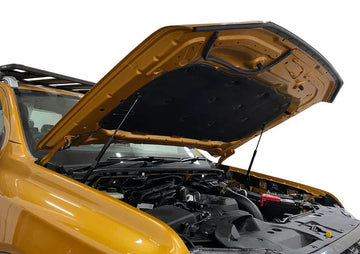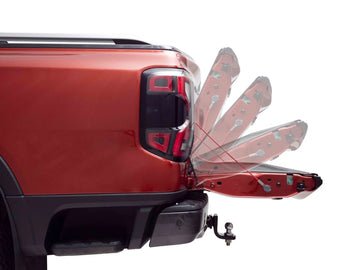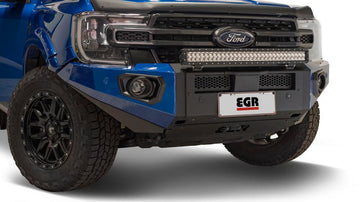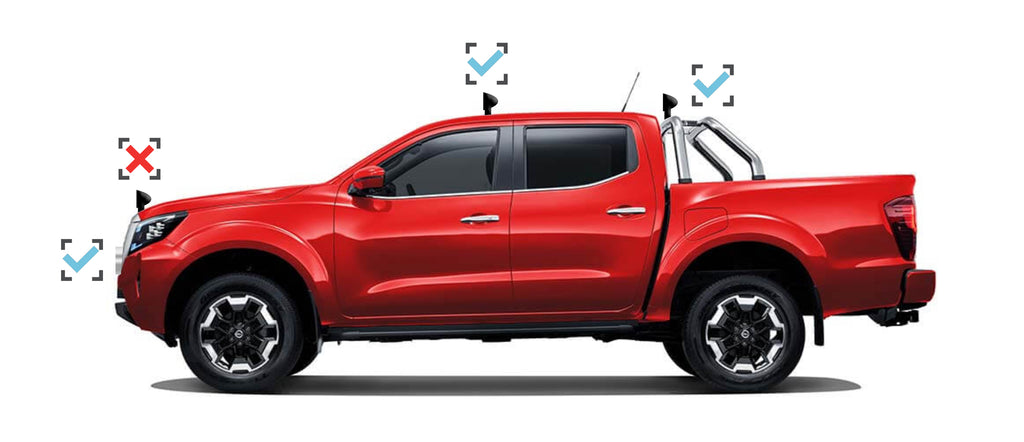Your 4x4 Load Rating Explained
At Brixton 4x4, our primary objective is to provide accurate and comprehensive information about all our products. We strive to offer the clearest details, enabling you to make informed choices when using our 4x4 accessories. Today we want to explain a little more about load ratings, what they mean and how to choose the correct equipment for your vehicle, all while ensuring safety is your top priority. With this knowledge under your belt, we hope you head off to enjoy many off-road adventures and explore the great outdoors.

Load ratings are essential specifications that define the maximum amount of weight a vehicle can safely handle. Understanding load ratings is crucial for ensuring safety and preventing accidents. In this blog, we'll delve into the concept of load ratings, explore vehicle load ratings, compare static and dynamic loads, and discuss load ratings in off-road applications. Additionally, we'll provide some quick tips to keep in mind when dealing with load ratings to ensure safe and efficient operations when driving your 4x4.
In order to determine the maximum weight that can be carried on top of your ute or vehicle, there are several important factors that must be taken into account. These key points will be discussed in detail below;

1. What are Load Ratings?
Before installing any 4x4 accessories on your vehicle’s roof or ute trayback, it is crucial to consider your vehicle’s load rating, as it varies from one vehicle to another. Load ratings represent the maximum allowable weight that a vehicle can handle without causing damage or compromising safety. These ratings are determined through rigorous testing and analysis, ensuring that the materials used and design can withstand the imposed loads.
For vehicles, load ratings are crucial for determining the maximum weight they can carry, including passengers, cargo, and accessories. The vehicle manufacturer specifies these ratings to ensure optimal performance and safety on the road. Exceeding the prescribed load rating can lead to increased tyre wear, reduced braking efficiency, and potential damage to the vehicle's suspension system. Always consult your vehicle's manual or the manufacturer's guidelines to determine its specific load rating.
A typical loaded 4x4 may consist of: • A roof platform • A roof platform carrying solution (typically consisting of crossbars, legs and a vehicle specific fitting kit), Or a canopy etc. Each of the items listed above has its own maximum load rating which dictates the heaviest load which that particular item can safely carry or hold.
Quick Tip: Always remember to apply the lowest rating if your vehicle has different load ratings for front and rear axles. This helps maintain balanced weight distribution and ensures better handling and stability.

2. Static vs. Dynamic Loads
Load ratings can be classified into two main types: static and dynamic loads. Static loads refer to stationary weights applied to a vehicle. These include parked vehicles or equipment and the load they carry without any movement. On the other hand, dynamic loads involve moving weights, such as the forces experienced while driving. Both static and dynamic loads are important considerations, and manufacturers design their products to handle both types effectively.
As a general rule, in a static environment, the load rating increases by a multiple of three (3)†. So if the dynamic load rating is 80 kg then the static load rating is 240 kg (80 kg x 3). Say you want to fit a roof-top tent to your 4x4; with an 80 kg person you will have 100 kg left for your mattress, pillows, linen and any potential guest you wish to invite over for snacks. (240 kg static load rating - 10 kg crossbars - 50 kg rooftop tent - 80 kg person = 100 kg).

3. Off-Road Use and Load Ratings
Off-road enthusiasts should pay special attention to load ratings, as the conditions in rough terrains can place additional stress on vehicles and equipment. When traversing uneven and challenging landscapes, the load distribution and the ability of the vehicle to handle dynamic loads become critical factors. Off-road modifications, such as adding a roof rack or towing equipment, can impact load ratings and should be factored into the overall weight calculations.
| Item/Weight | Weight (kgs) | Quantity | Subtotal (kgs) |
|---|---|---|---|
| Yakima Ruggedline Roof Platform | 13.61 | 1 | 13.61 |
| Ford Ranger Next Gen (Roof Load Capacity) | - | - | 74.84 |
| Kayak | 22.68 | 1 | 22.68 |
| Total | - | - | 36.29 |
Maximum Load Rating Formula: Maximum Load Capacity = Roof Load Capacity - Subtotal
In this example, the Roof Load Capacity of the Ford Ranger Next Gen is 74.84 kgs. After placing the Yakima Ruggedline (13.61 kgs) and the kayak (22.68 kgs) on the roof platform, the total weight carried is 36.29 kgs.
To calculate the maximum load capacity, we use the formula:
Maximum Load Capacity = 74.84 kgs (Roof Load Capacity) - 36.29 kgs (Subtotal) ≈ 38.55 kgs
So, in this scenario, you can safely carry up to approximately 38.55 kgs of additional weight on the roof platform without exceeding the maximum load rating of the vehicle. Always remember to use load ratings to ensure the safety and optimal performance of your 4x4 vehicle when carrying items. Be sure to refer to your vehicle's manual or the manufacturer's guidelines for accurate load ratings specific to your make and model.
Quick Tip: Before embarking on an off-road adventure, ensure your vehicle's load rating can handle the combined weight of passengers, gear, and any aftermarket accessories you've installed.

4. Regular Inspections and Maintenance
To ensure the longevity and reliability of your vehicle or equipment, it's crucial to conduct regular inspections and maintenance checks. Overloading or consistent exposure to heavy loads can lead to premature wear and tear, compromising the structural integrity and overall performance of your 4x4. Inspecting tyres, suspension components, and load-bearing elements regularly can help identify potential issues early on, preventing costly repairs and ensuring safety.
Quick Tip: Keep a logbook to track load weights and maintenance schedules. This can provide valuable insights into your equipment's performance and alert you to any emerging problems.

Understanding load ratings is essential for safe and efficient operations in various industries, especially when it comes to vehicles and equipment. Whether you're using your vehicle for daily commuting or engaging in off-road adventures, adhering to load ratings ensures optimal performance and safety. Always follow the manufacturer's guidelines, conduct regular maintenance, and apply the lowest rating when required. By doing so, you can enjoy peace of mind, knowing that your vehicle or equipment is capable of handling the demands you place upon it. Alright, now get out there and enjoy Australia's great outdoors!




























